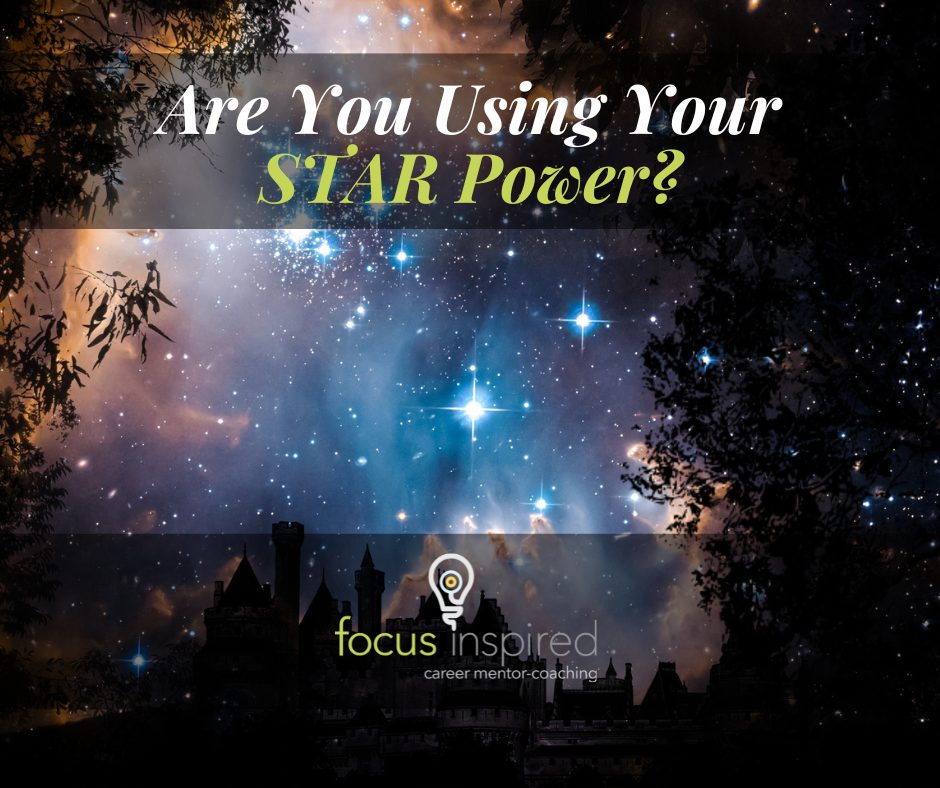
Are You Using Your STAR Power?
Answering questions in an interview can sometimes feel like it’s difficult to know where to start. Questions are left vague and open-ended on purpose to allow you the freedom to answer it in a way that you feel fits best. It’s always a challenge to pack as much information as you can into your answer while also being as succinct as possible. I took on one such question last week, in the “Tell Me About Yourself” blog.
Today though, is all about the “behavioural” interview question. In other words, how you would answer a question that specifically asks what you would do in a particular situation provided by the interviewer. For example:
“Tell me about a time when you had to use your conflict management skills in the office, and what were the results of your efforts?”
As the title might suggest, you might need to use a little STAR power to answer this question effectively. What is the STAR method, you might ask? Well, it’s a helpful acronym to help you remember these four steps:
- S: Situation – Describe the context of your example, with all the relevant background details your interviewer needs to know.
- T: Tasks – What were your responsibilities in this example, and what was the challenge?
- A: Actions – What did you do to fix the situation? Show your work! Give them the steps you took and how you thought your way through the problem.
- R: Results – What positive change came from your action? Can you give concrete figures to back it up?
I can now show you how to tackle the example question using the STAR method, and you will see how the structure helps to form a complete answer.
- Situation: While I was working in my sales job, I had a situation where an employee and a customer got into a bit of an argument over the results of a jewellery repair we had completed for them. The customer was pointing to how the work was unsatisfactory while the sales associate assured them that the completed work was exactly what they had asked for.
- Tasks: Normally, each employee was responsible for handling the items that they started, but other employees were regularly called upon to take care of others’ work if the person responsible wasn’t on shift when a client returned. This extended to conflict resolution, and I took the opportunity to step in as a fresh face to attempt to diffuse the situation.
- Actions: First, I created a situation that gave the employee caught in the argument an opportunity to leave gracefully while transitioning into taking over the situation. Then, I calmly started going over what the client believed to be the trouble, making it seem like I was familiarizing myself with the case when in fact, I knew much of the situation already and was just allowing the client an opportunity to summarize how they perceived the situation. Then, I calmly and carefully showed the client clearly what was requested and what was excluded, apologized to the client if there was some misunderstanding on what was needed in the repair, and finally offering for the situation to be resolved by clearly understanding exactly the needs of the client before sending the piece out to be repaired as they wished.
- Results: The client was thankful for the open dialogue and in the end, was happy with the results when the item returned. The tag-team method of conflict resolution ended up being a tried and true method for many client issues going forward, and it was communicated to all employees to ensure the all of a client’s needs are captured when they make a request.
With this type of response, it usually ends up clear, concise, and detailed. You demonstrate your skills while also showing why the situation mattered and was relevant to the question. Your answer almost reads like a story, giving the context from start to finish.
Try using a STAR answer next time you’re in an interview!
Follow:Share: